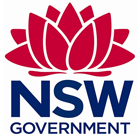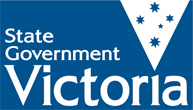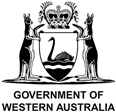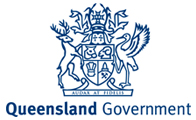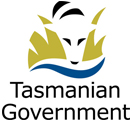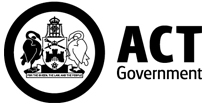Improvements since 2000
The 2018 revision of the Australian and New Zealand Guidelines for Fresh and Marine Water Quality (ANZ Guidelines) is now an online platform. This is to improve usability and provide faster updates as new information becomes available.
There have been revisions to default guideline values (DGVs) since the ANZECC & ARMCANZ (2000) guidelines. These have been provided for the ‘aquatic ecosystem’ community value.
DGVs have been revised for physical and chemical (PC) stressors. This follows new knowledge, broader monitoring data collected since 2000, and an ecoregionalisation approach. More specific guidance is provided for temporary inland waters.
Additional and revised DGVs for some high priority toxicants are available.
For toxicants, the method for deriving DGVs was revised. It was then applied to update existing or derive new DGVs for many toxicants. This included using more recent toxicity data.
Minor updates to the guidance for the ‘primary industry’ community value were made. They were based on a review of knowledge about livestock drinking water.
Sections dealing with recreational water and drinking water have been removed. The water quality and health guidelines are produced by the Australian Government National Health and Medical Research Council (NHMRC). In New Zealand, this guidance is provided by the Ministry for the Environment and the Ministry of Health.
Here we have outlined additional key changes made in revising the ANZ Guidelines.
Water Quality Management Framework
The basic Water Quality Management Framework by ANZECC & ARMCANZ (2000) has been expanded and emphasised.
Following the steps in the revised Water Quality Management Framework provides a logical approach to identifying and managing key water quality issues.
Water Quality Guidelines Improvement Program
The Water Quality Guidelines Improvement Program (WQGIP) was established in July 2020 by the National Water Committee (NWC). The WQGIP aims to keep the NWQMS and its guidelines up to date, useful and scientifically sound. The WQGIP operates on a rolling two to three-year program of activities. These are reviewed annually. They are implemented via a yearly work plan approved by the NWC and managed by DCCEEW.
A new five-year strategic plan is being developed. It will guide the ongoing use of the NWQMS.
The strategic plan is being developed in a two-stage process:
- Stage one is to work with stakeholders. We will identify strengths and weaknesses of the current WQGIP
- Stage two involves working with stakeholders to draft a five-year strategic plan for the ongoing revision of the WQGIP.
The report was undertaken by an independent reviewer and does not represent Government policy.
Stage one report: Analysis of the Australian and New Zealand Water Quality Guidelines Improvement Program
Final report and implementation plan: Australian and New Zealand Water Quality Strategies and Guidelines Continuous Improvement Program Strategic Plan and High-Level Implementation Plan
Transition from Burrlioz to shinyssdtools – improved software to derive water quality guideline values
In 2024, the Water Quality Policy Sub Committee (WQPSC), the governing body of the National Water Quality Management Strategy (NWQMS), approved the adoption of the (shiny)ssdtools software to replace of the Burrlioz 2.0 software, for deriving toxicant DGVs.
Since 2000, DGVs (and site-specific guideline values) for toxicants in Australia and New Zealand have been derived using the Burrlioz species sensitivity distribution (SSD) software. A technically superior approach is now available through (shiny)ssdtools software tool, which has replaced Burrlioz.
A key difference between Burrlioz and shinyssdtools is that the latter uses a process known as model averaging, where multiple distributions are used to estimate DGVs. Burrlioz uses only a single distribution.
While Burrlioz is still a reliable approach, its replacement by (shiny)ssdtools represents a further improvement. This is part of the continual improvement philosophy of the ANZ Guidelines. And supports ongoing advancements in science and statistics.
More information can be found on the (shiny)ssdtools page.
References
Fox DR, van Dam RA, Fisher R, Batley GE, Tillmans AR, Thorley J, Schwarz CJ, Spry DJ & McTavish K 2021. Recent developments in species sensitivity distribution modeling. Environmental Toxicology & Chemistry 40(2), 293-308.
Fox DR, Fisher R, Thorley JL & Schwarz C 2022. Joint Investigation into statistical methodologies underpinning the derivation of toxicant guideline values in Australia and New Zealand. Report prepared for the Department of Agriculture, Water and the Environment. Environmetrics Australia, Beaumaris, Vic and the Australian Institute of Marine Science, Perth, WA. 167 pp.
Fox D, van Dam R, Batley G, Fisher R & Thorley J 2023. Improved SSD software coming soon for the ANZG Guidelines. Australasian Bulletin of Ecotoxicology and Environmental Chemistry 9, 1-3.
Focus on typical uses
To assist the user, we give step-by-step guidance on how to apply the Water Quality Management Framework in a number of situations or typical uses.
- Developing a water quality management plan
- Applying for a development approval
- Assessing a waste discharge
- Investigating an unexpected event
- Assessing a remediation study (for sediments and waters)
- Conducting a baseline study
- Implementing a broadscale monitoring program
Guidance for each typical use is only provided to illustrate how to use the framework. You should adapt the framework to suit your specific application.
Weight-of-evidence process
The ANZECC & ARMCANZ (2000) guidelines are applied to community values. They relied largely on a single line of evidence (chemical assessment) to check for exceeded guideline values.
The Water Quality Guidelines improve confidence in our assessments by:
- introducing a systematic approach to assessing a number of lines of evidence along the pressure–stressor–ecosystem receptors pathway
- promoting decisions on the basis of the integrated weight of evidence.
Learn more about weight of evidence.
Conceptual models
Natural systems are complex. To understand and manage them well, we can build conceptual models to show the current understanding of how the system works. This is an essential first step in the application of the Water Quality Management Framework.
Conceptual models can also be used when selecting indicators for water/sediment quality. They can also be used during system monitoring and assessment.
Develop and use conceptual models.
Your location (ecoregionalisation)
The simple ecoregionalisation in ANZECC & ARMCANZ (2000) has been extensively updated. These updates are based on improved ecosystem understanding.
Our ecoregionalisation approach is only used for the ‘aquatic ecosystems’ community value. We provide more relevant DGVs for PC stressors in each region, as well as more targeted and relevant biological assessment.
Australian and New Zealand users follow different approaches.
Cultural and spiritual values
Water resources have important cultural and spiritual values, particularly for the indigenous peoples of Australia and New Zealand.
Incorporate cultural and spiritual values into water quality management.
References
ANZECC & ARMCANZ 2000, Australian and New Zealand Guidelines for Fresh and Marine Water Quality, Australian and New Zealand Environment and Conservation Council and Agriculture and Resource Management Council of Australia and New Zealand, Canberra.


